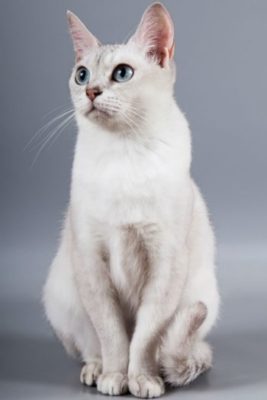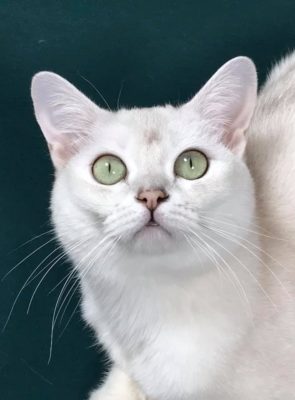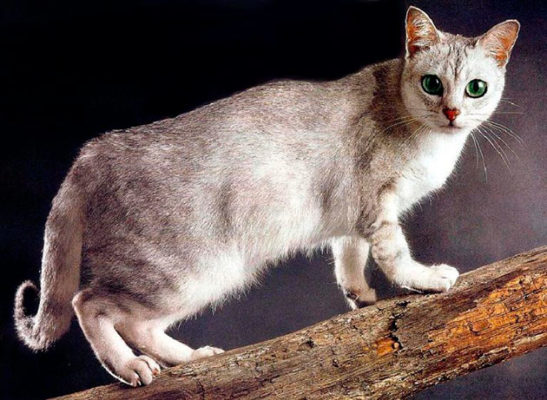Burmilla Shorthair
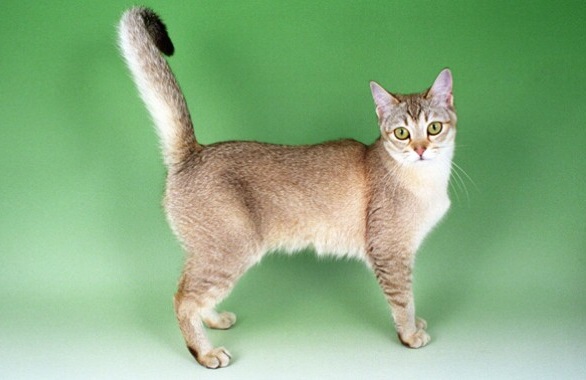
The Burmilla Shorthair combines the phlegmatic of the Persian Chinchilla with the activity of the Burmese cat. You should not leave her alone; she requires increased attention. Burmillas are kind and affectionate, very sociable and playful. Representatives of the breed are not aggressive, treat children and other animals well. Burmilla easily gets along with a dog or cat.
Table of Contents
Breed Information
| Origin | United Kingdom |
| Size | 24-30 cm |
| Weight | Males 5-7 kg Females 4-5 kg |
| Fur Type | Short-haired |
| Color | Silver-blackened, white-silver with obvious ticking |
| Lifestyle | Outdoors, indoors |
| Lifespan | 15-18 years |
| FIFe Classification | Category III “Short-haired and Somali” Breed designation – BML |
| WCF Classification | Group 3: “Short-haired ” Breed designation – BML |
| TICA Classification | – |
| Group | Short-haired cats, cats for kids |
| Price | $500-700 |
Breed Photos
Origin History
The Burmilla Shorthair is an accidentally bred breed in Great Britain. Baroness Miranda von Kirchberg gave her husband a Persian Chinchilla kitten. Later, the pet was mated with a Burmese cat. As a result, silver-colored kittens were born.
Baroness Teresa’s friend took one kitten and did the breeding work. Later the Burmills were imported to Denmark, then to Australia and other countries. In the GCCF, the breed standard was adopted on January 21, 1984. The CFA recognized them in 2014. The Burmilla is popular all over the world because of its extravagant appearance.
Appearance
The Burmilla Shorthair is an elegant medium-sized cat. The breed is muscular, and its weight ranges from four to seven kilograms. The head is of medium size. The short muzzle is wedge-shaped, the outlines are smooth. The tip of the nose is in line with the well-developed chin.
The large crescent-shaped eyes are slightly oblique. The iris is green in color. Around the eyes is a dark rim. The ears are medium-sized rounded at the ends, wide at the base. Burmilla Shorthair – compact cat with a wide chest. Wool of the breed is short with a light undercoat. There is an agouti effect on the tail, head, and paws. The shaded colors can be blue, black, cream, chocolate, purple, etc. The tips of the hairs are darker than the main color.
Character
The Burmilla Shorthair combines the phlegmatic of the Persian Chinchilla with the activity of the Burmese cat. You should not leave her alone; she requires increased attention. Burmillas are kind and affectionate, very sociable and playful. Representatives of the breed are not aggressive, treat children and other animals well. Burmilla easily gets along with a dog or cat.
The four-legged one likes to sit in her arms and walk in the fresh air. If she doesn’t like something, she will show her displeasure. Burmilla are inquisitive cats. She will explore all corners of the house and sniff objects of interest. Representatives of the breed are very loyal to the owner.
Care
First of all, you need to equip the apartment for keeping the cat. Get scratching posts, entertainment complexes for four-legged animals, bowls for water and food, as well as toys. Be sure to have a special brush for brushing hair. It should be done once a week. You can also wipe the cat with a damp cloth.
Trim claws as they grow. Clean accumulated mucus from a Burmilla’s eyes regularly; otherwise, there is a risk of infection. Do not forget vitamin complexes for cats. They are necessary to maintain good health.
Education
The Burmilla is a vulnerable animal, and shouting can disrupt its nervous system. When raising representatives of this breed, intonation plays an important role. According to it, the cat determines the allowed and prohibited actions. It is necessary to learn to understand the pet and talk to it.
It is important to praise the Burmilla for achievements and good behavior. Praise and treats from the owner are the best motivation for obedience. The Burmilla remembers everything quickly. Problems with the litter box should not arise. It is essential to start training and instilling good manners from an early age.
Common Diseases
Burmilla Shorthair has good health and strong immunity. The cat is notable for its longevity. The most common diseases:
- allergies;
- renal polycystic disease;
- digestive problems;
- diseases of the eyes and ears.
To prevent the above problems, watch your pet’s diet and visit the veterinarian regularly. Follow good hygiene practices and clean his eyes and ears regularly to prevent the development of infectious diseases.
Nutrition
The diet should be varied and balanced. Burmilla needs vitamins, minerals, and other trace elements to keep it in good shape. It is best to buy ready-made food from proven manufacturers. Don’t skimp on nutrition; your cat’s quality of life depends on it.
If you decide to feed your natural pet food, teach it from an early age and gradually. Immediately give porridges with milk, then egg yolk, and low-fat cottage cheese. After that, you can offer lean cat meat. Burmilla Shorthair loves fermented dairy and seafood, as well as fresh fruits and vegetables. Buy a vitamin complex for cats additionally.
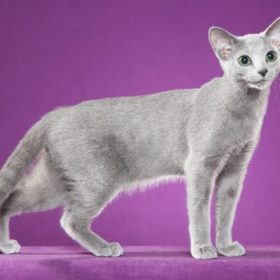 Russian Blue
Russian Blue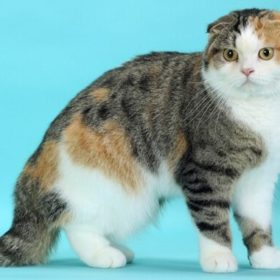 Scottish Fold
Scottish Fold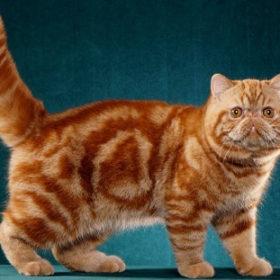 Exotic Shorthair
Exotic Shorthair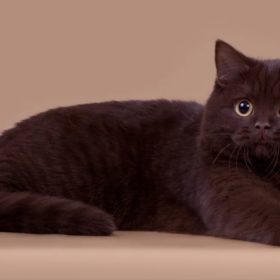 York Chocolate
York Chocolate Singapura
Singapura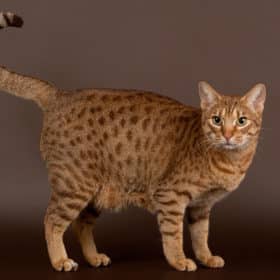 Ocicat
Ocicat